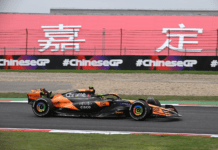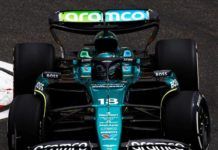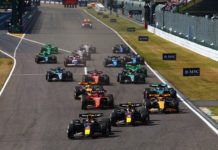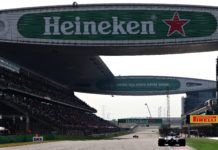The changes to the front and the rear wing along with the brake ducts was fast-tracked by the FIA to F1 2019 after consensus from the teams to boost overtaking.
The changes to the F1 regulations in 2017 helped for the cars to be more powerful and go at a faster speed, enough to break lap records but it created the issue for overtaking where following a car became ever difficult.
The dirty air from the cars ahead disrupted the aerodynamic performance of the cars behind which meant overtaking became hugely difficult unless the car behind had nearly a second’s advantage to pass the car ahead.
The FIA thus has regulated for the front and rear wings along with the brake ducts to be simplified for 2019 and beyond so as to create a ‘mushroom effect’ which will throw the dirty air in the upward direction rather than behind.
Eight of the 10 F1 teams undertook simulations with the changes and said that the results were positive to allow closer racing. While the simulations does show positive results but the actual results will only be seen during the 2019 season.
FIA’s head of single-seater technical matter, Nikolas Tombazis, said: “It’s quite a heavy rule change that’s being introduced for the front wing. It will be reduced to five elements only, and we’ve put in place rules that will only allow these elements to change shape gradually and smoothly across the span without the discontinuities, extra profiles and fins on the top surface that create the strategic vortices that push the wheel wake outboard today.
“The end plates become much simpler and underneath the wing teams will be limited to a maximum of two fences. The rear wing helps us when we’re trying to promote closer racing. It has two strong trailing vortices, which pull the flow up from close to the ground into the ‘mushroom’.
“This mushroom is pushed upwards quite violently and quickly, allowing clean air to be pulled in from the sides to take the place of the turbulent air being flung upwards. This clean air tends to be higher energy, which has a beneficial effect on the aerodynamics of the following car. We want to increase that mushroom effect and make it stronger, but also put more of the dirty air into its vicinity to push it up and out of the way,” he explained.
Few of the teams already ran the new front wing in the July’s in-season test at Hungaroring with many certain to run it in the post-season test at Yas Marina circuit. Since the dirty air cannot be eliminated, the governing body opted for mitigation.
The changes has the teams support with Williams’ chief Paddy Lowe hugely positive – the Grove-based team was one of the outfits to run the new-spec front wing. “It’s well known that Williams supported this set of regulations,” he said.
“Having understood a lot of the history and been involved in the past with developing regulations for better car following, I’ve appreciated the work that’s been done recently. I was not a fan of the 2017 regulations which, I thought, were a backwards step for overtaking.
“I feel that not doing anything now would mean we’d have several years of a worsening situation as the teams develop more downforce. The FIA and FOM were correct to act at this point and do something different for 2019 and 2020. I’ve got quite a high confidence in the technical aspects of what’s been done, that it will take us back in the right direction.”
For now, as alluded, Tombazis cannot give a certain number with regards to how much change the new regulations will bring. “We consider the critical position to be around 15 to 20 metres between the cars,” he said. That’s the distance we’d expect to see between cars running half a second apart approaching a medium-speed corner.
“With the current generation, the following car loses about 30 per cent of its downforce in this scenario. We hope to reduce that by 10 per cent. It’s difficult to provide an exact number. What I would say is that there is a general trend for teams to develop more downforce, which would exacerbate the problem.
“If we had not intervened, we feel that 2019 would be worse than 2018, and 2020 would be worse than 2019. We now believe that 2019 will be better than 2018, but no one is expecting F1 cars to be fighting like touring cars.”



















